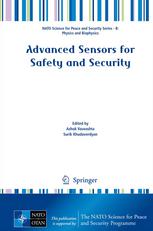

Most ebook files are in PDF format, so you can easily read them using various software such as Foxit Reader or directly on the Google Chrome browser.
Some ebook files are released by publishers in other formats such as .awz, .mobi, .epub, .fb2, etc. You may need to install specific software to read these formats on mobile/PC, such as Calibre.
Please read the tutorial at this link: https://ebookbell.com/faq
We offer FREE conversion to the popular formats you request; however, this may take some time. Therefore, right after payment, please email us, and we will try to provide the service as quickly as possible.
For some exceptional file formats or broken links (if any), please refrain from opening any disputes. Instead, email us first, and we will try to assist within a maximum of 6 hours.
EbookBell Team

4.0
76 reviewsThis book results from a NATO Advanced Research Workshop titled “Technological Innovations in CBRNE Sensing and Detection for Safety, Security, and Sustainability” held in Yerevan, Armenia in 2012. The objective was to discuss and exchange views as to how fusion of advanced technologies can lead to improved sensors/detectors in support of defense, security, and situational awareness. The chapters range from policy and implementation, advanced sensor platforms using stand-off (THz and optical) and point-contact methods for detection of chemical, nuclear, biological, nuclear and explosive agents and contaminants in water, to synthesis methods for several materials used for sensors. In view of asymmetric, kinetic, and distributed nature of threat vectors, an emphasis is placed to examine new generation of sensors/detectors that utilize an ecosystems of innovation and advanced sciences convergence in support of effective counter-measures against CBRNE threats. The book will be of considerable interest and value to those already pursuing or considering careers in the field of nanostructured materials, and sensing/detection of CBRNE agents and water-borne contaminants. For policy implementation and compliance standpoint, the book serves as a resource of several informative contributions. In general, it serves as a valuable source of information for those interested in how nanomaterials and nanotechnologies are advancing the field of sensing and detection using nexus of advanced technologies for scientists, technologists, policy makers, and soldiers and commanders.